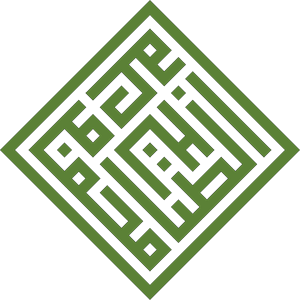LNS 193 C
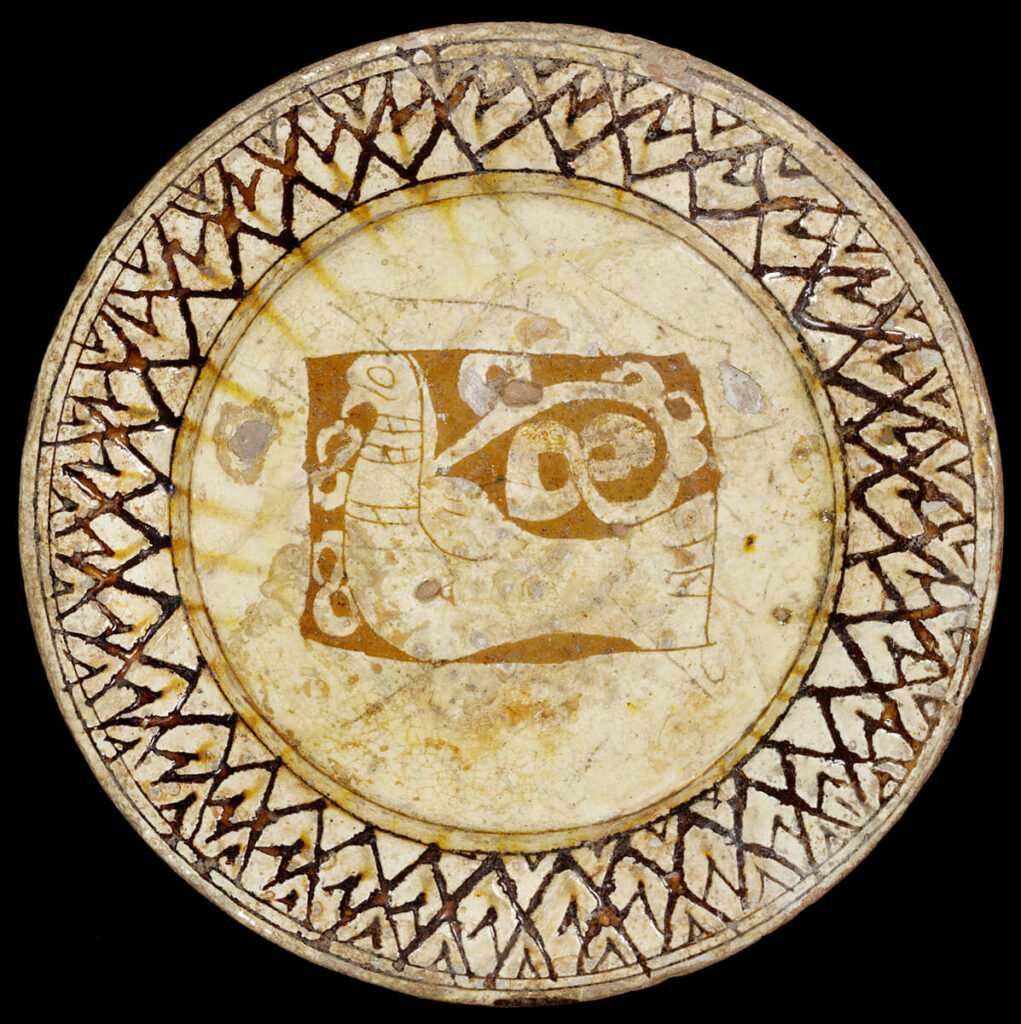
Earthenware “Garrus ware” dish, featuring a dove with a stylized foliate stem
LNS 210 C
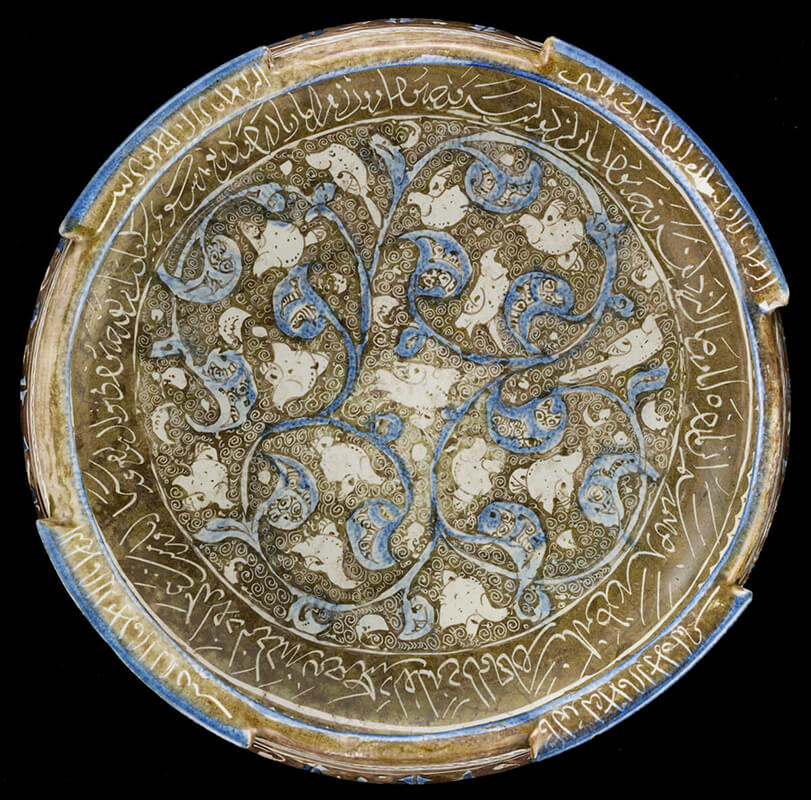
Composite bodied bowl painted in cobalt blue and metallic lustre, the inside center with birds amidst a quadripartite half-palmette scroll, against a dense spiralling scroll ground. Inscriptions in an extremely free cursive hand include good wishes to the owner; Persian verses on the pain of love; Arabic verses attributed to the Imam al-Shaf’i on the importance of learning; and the date of manufacture
LNS 290 C
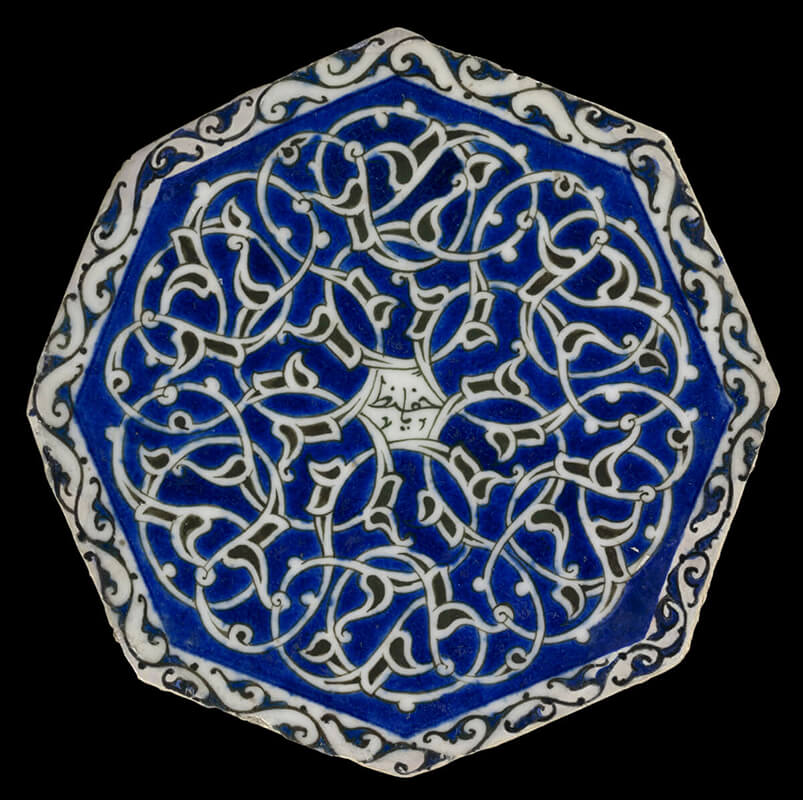
Composite-bodied ceramic tile from the Mausoleum of Khwaja Rabi‘ at Mashhad (north-eastern Iran), the field with a centralized half-palmette arabesque which seamlessly weds the hexagonal center with the octagonal outer perimeter; inscribed inside the central polygon, ‘O Protector’ (an invocation to God)
LNS 185 C
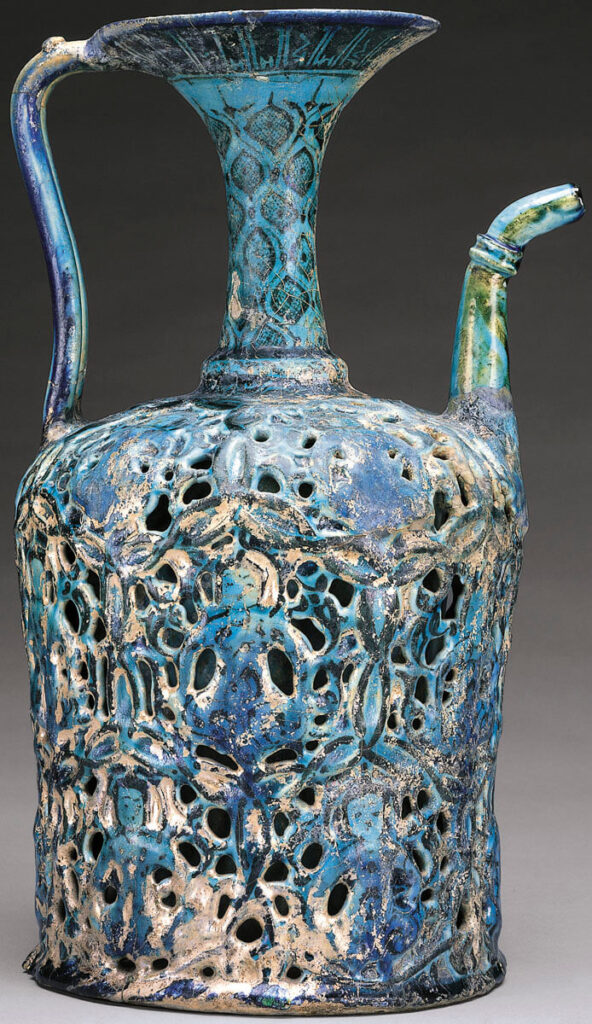
Reticulated double-walled composite-bodied ceramic ewer, the openwork shell decorated with seated princely figures enclosed in curvilinearized dodecagonal compartments
LNS 99 C
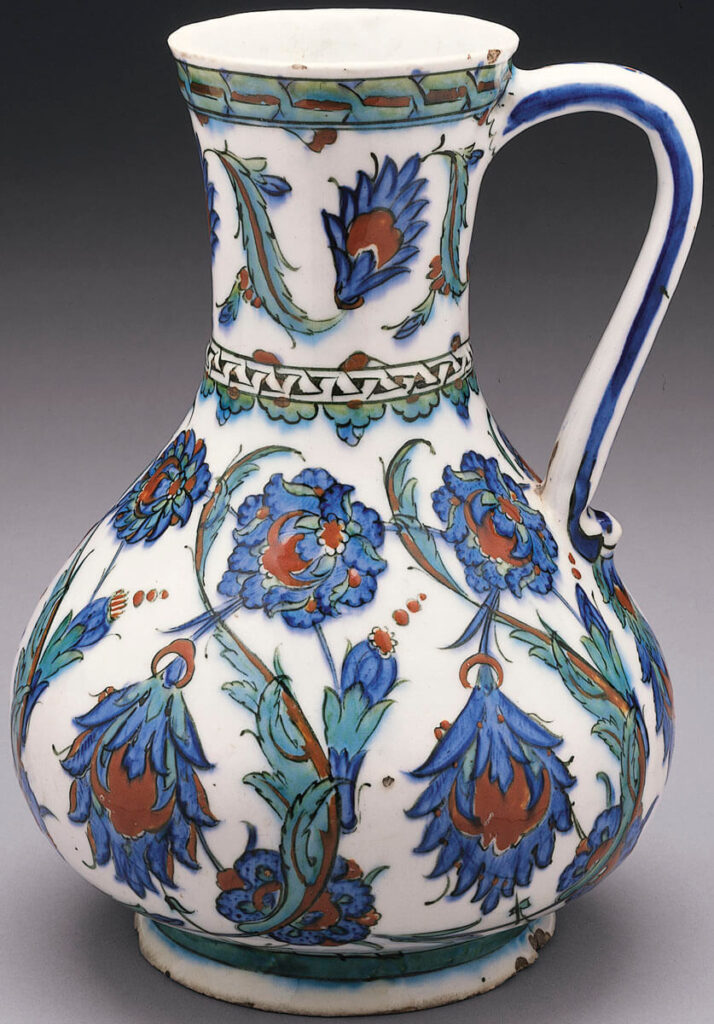
Composite-bodied ceramic ewer, the body covered with upright foliate scrolls bearing lotus blossoms, and the neck with a continuous scroll of leaves and lotus blossoms
LNS 295 C
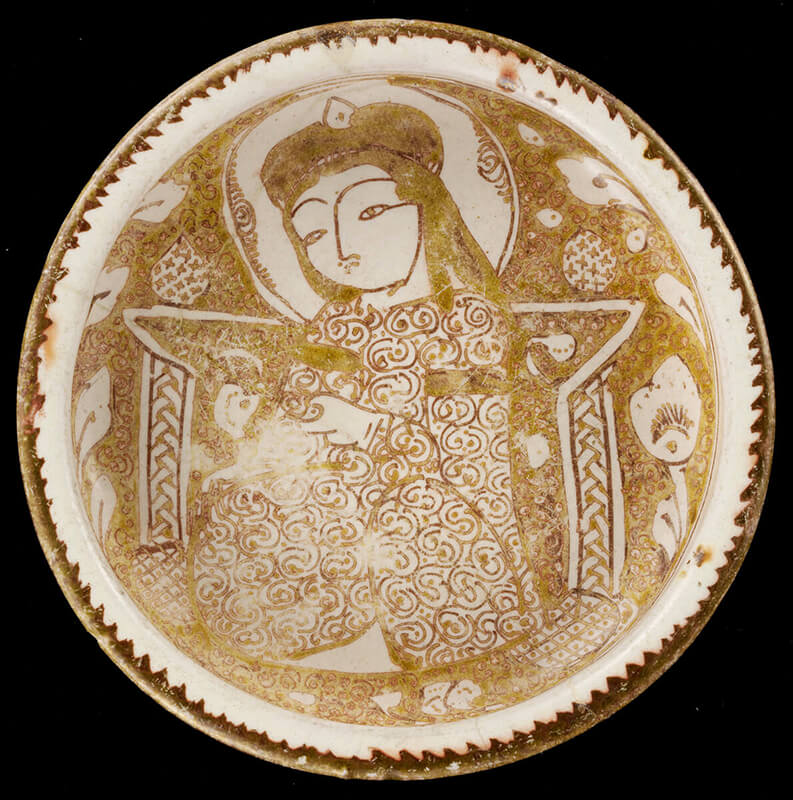
Three-footed composite-bodied ceramic dish with lustre-painted enthroned and haloed prince seated amidst stemmed blossoms and foliage, suggesting a garden setting; underside of dish with paired half-palmette ‘trees’ and a central unintelligible device
LNS 1077 C b,d,e / LNS 32 St a,c
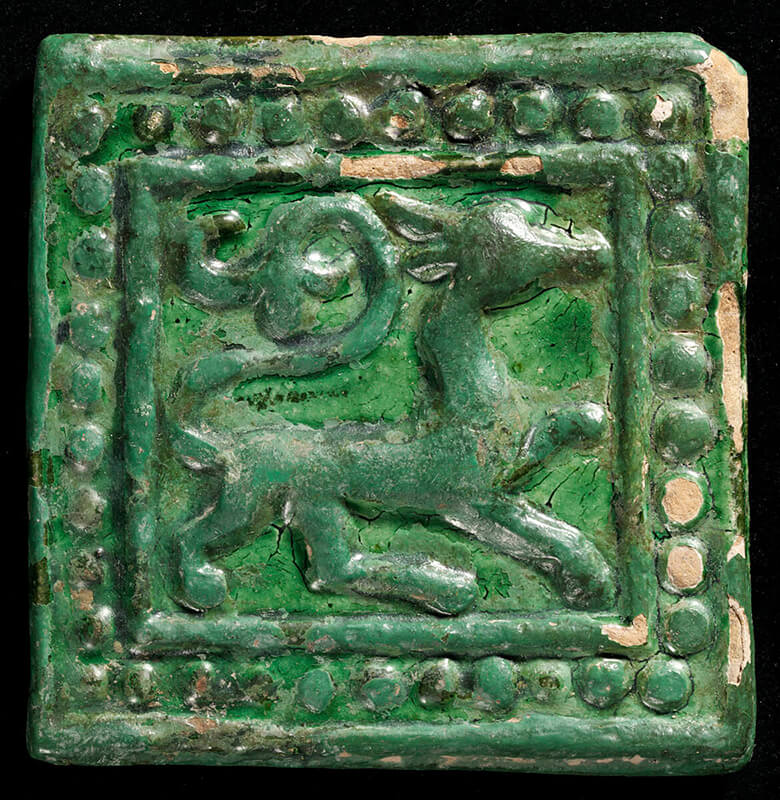
Three earthenware tiles, all featuring near-identical goats with tails terminating in curled half-palmettes
LNS 1071 C
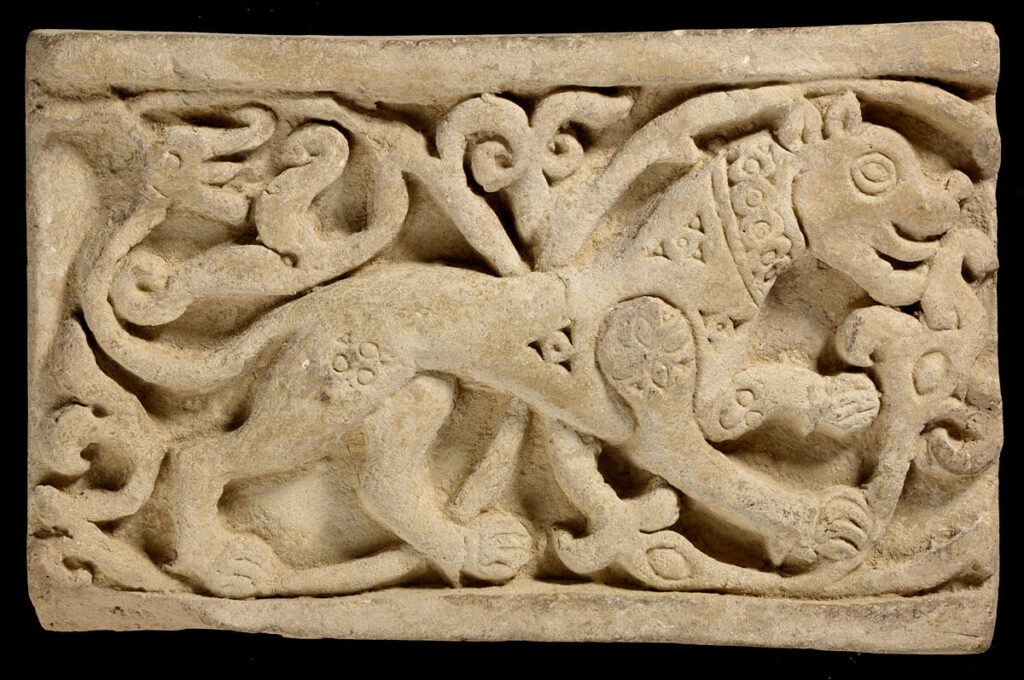
Unglazed earthenware tile (probably once part of a frieze) with the representation of a lion amidst a scroll, the lion’s tail and the scroll developing dragons’ heads
LNS 231 C
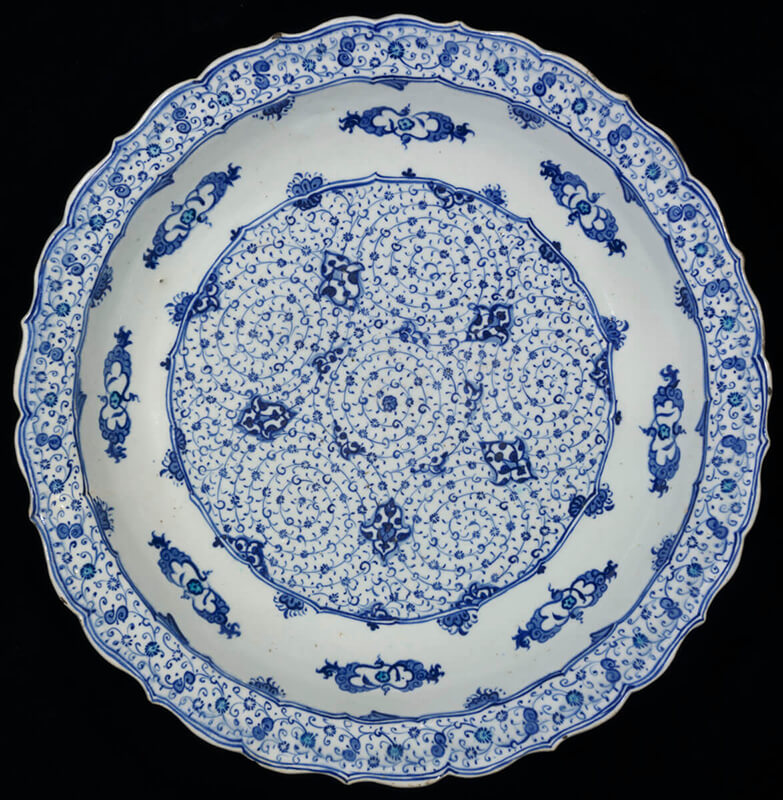
Composite-bodied ceramic dish, the center with a configuration of six circular dense foliated and floriated scrolls and five stylized palmettes, bordered by eight paired Chinese-style cloud devices, the rim with a border of small flowers on thin scrolling stems; exterior with alternations of two types of Chinese-inspired cloud motifs
LNS 219 C a,b
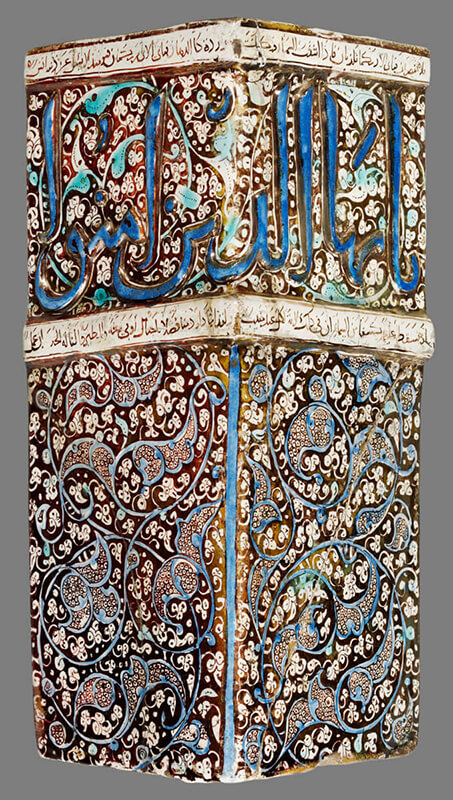
Two lustre tiles, probably from a shrine, inscribed with Qur’an chapter 55 (al-Rahman) vv.36-39 and chapter 34 (Saba`) vv.9-11
Kashan, Iran, second half 7th century AH/second half 13th century AD
